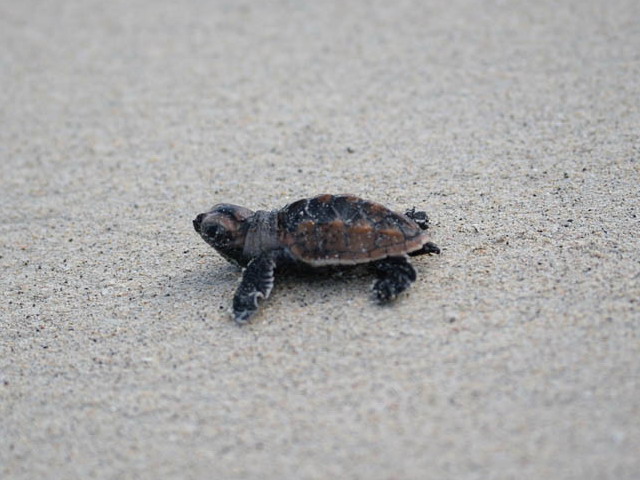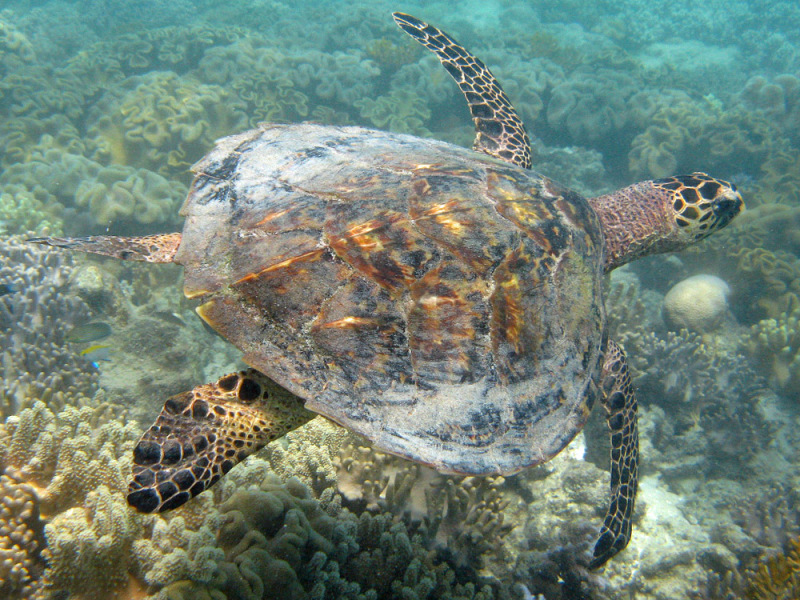Colours
Distinguishing features
The hawksbill's appearance is similar to that of other marine turtles. It has a generally flattened body shape, a protective carapace, and flipper-like arms, adapted for swimming in the open ocean. E. imbricata is easily distinguished from other sea turtles by its sharp, curving beak with prominent tomium, and the saw-like appearance of its shell margins. The hawksbill's arms have two visible claws on each flipper.
Hawksbill shells slightly change colors, depending on water temperature. (Wikipedia)
Size
- Up to 100 cm (Length of specimen)
Synonyms
Similar taxa
Comments
When young, the Hawksbill Turtle Shell is shaped like a heart.
It is the most beautiful turtle shell in the world.
by David Witherall
Distribution
Distribution and habitat preferences
The species has a worldwide distribution, with Atlantic and Pacific subspecies.
While this turtle lives part of its life in the open ocean, it spends more time in shallow lagoons and coral reefs. (Wikipedia)
Local abundance
- Lizard Island: Second most common turtle in this area after the Green Turtle.
Web resources
References
- Goatley, C.H.R. (2013). The ecological role of sediments on coral reefs, PhD thesis, James Cook University. LIRS catalog number 1840.
- Goatley, C.H.R., A.S. Hoey and D.R. Bellwood (2012). The role of turtles as coral reef macroherbivores. PLoS One, 7(6): e39979. LIRS catalog number 1523.
- Limpus, C.H. (1982). The reptiles of Lizard Island, Herpetofauna, 13(2): 1-6. LIRS catalog number 73.
- View all references













